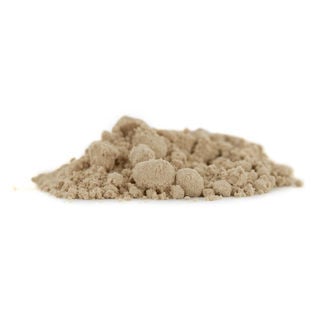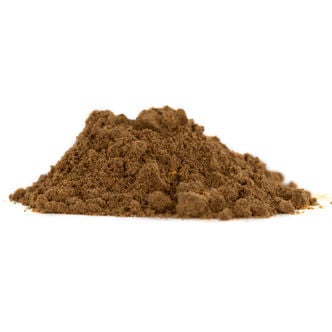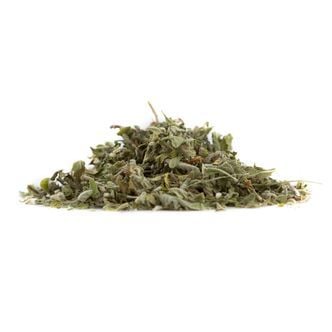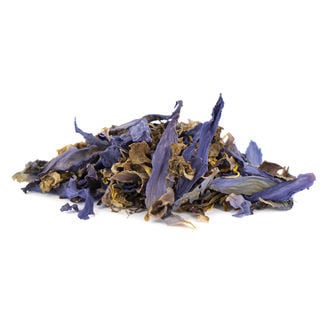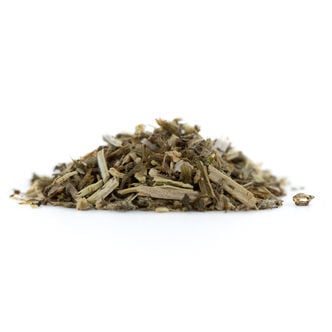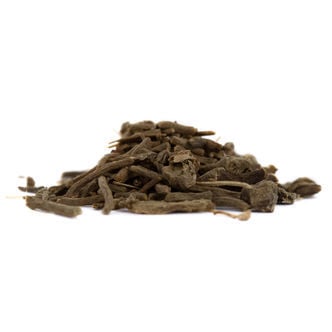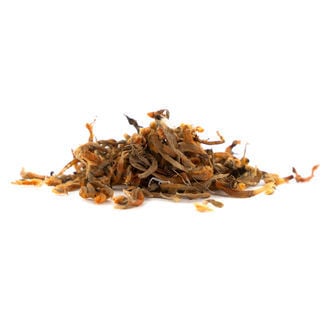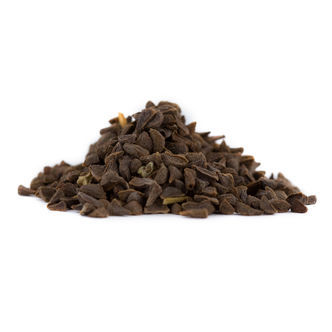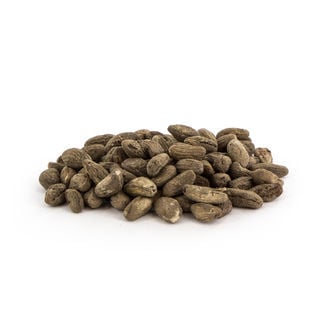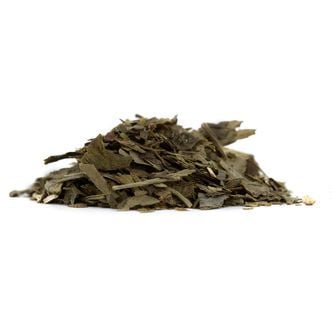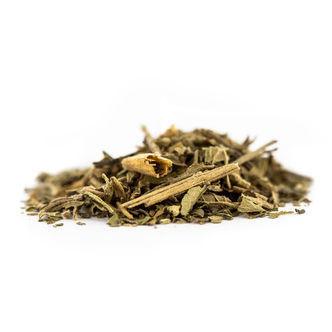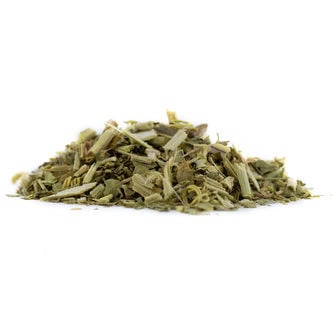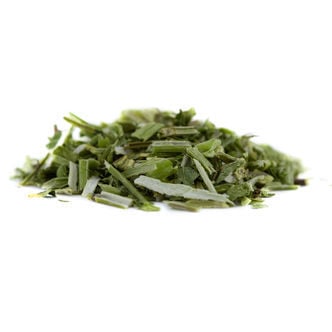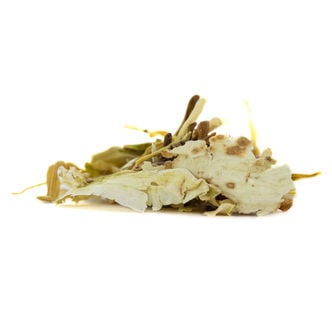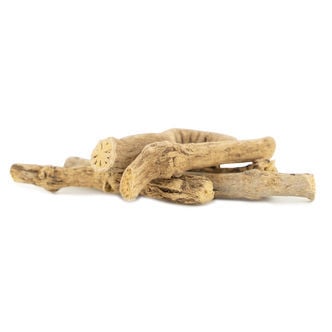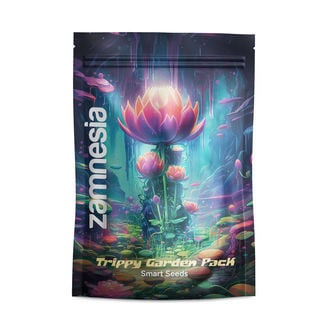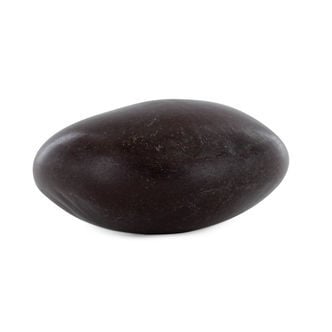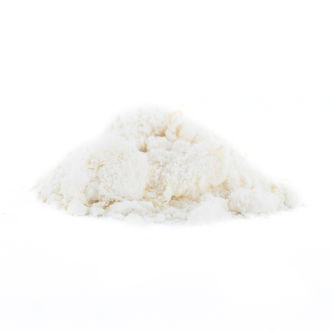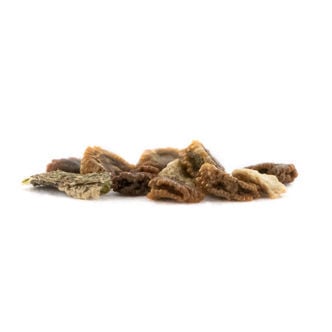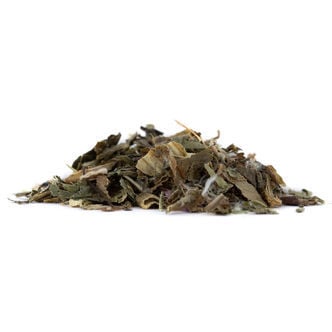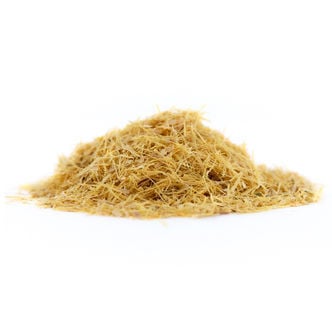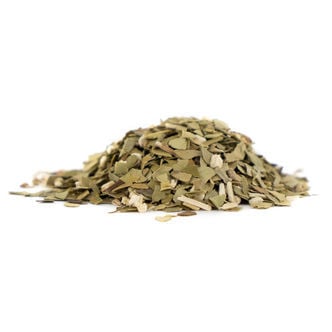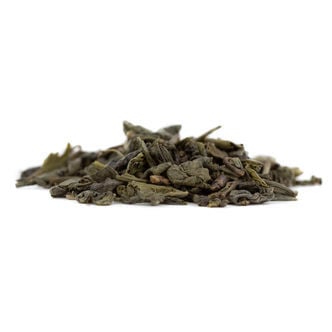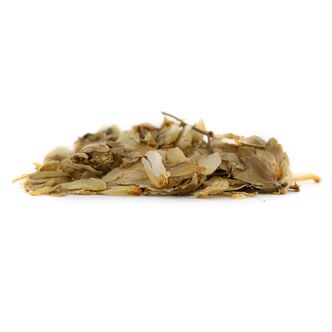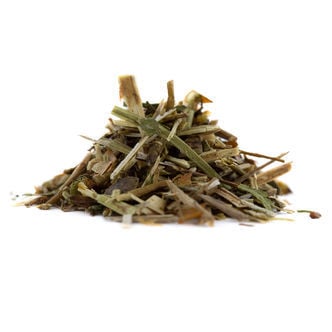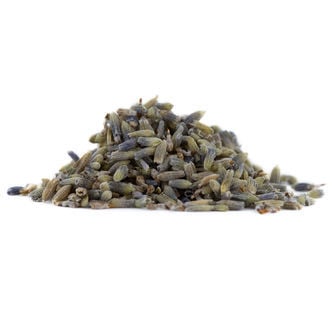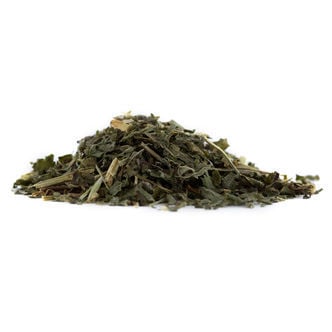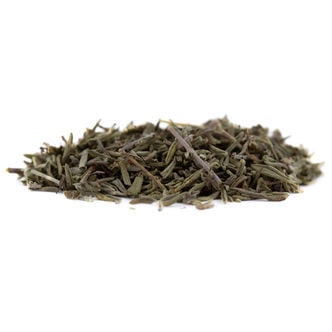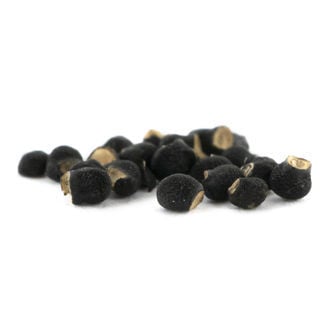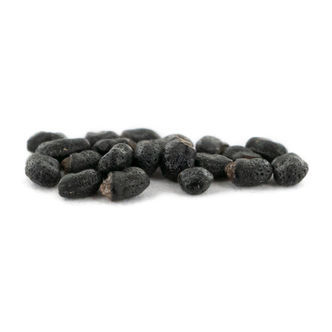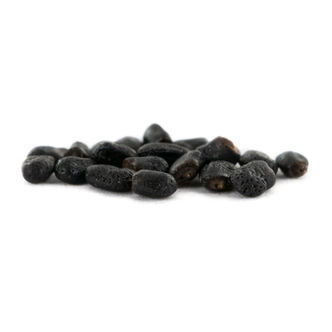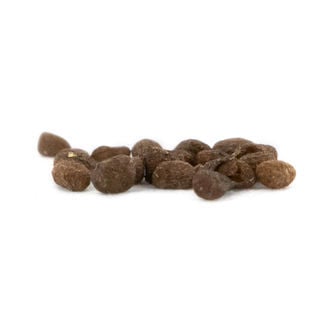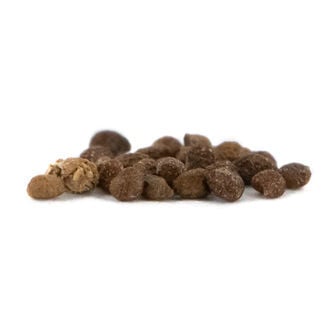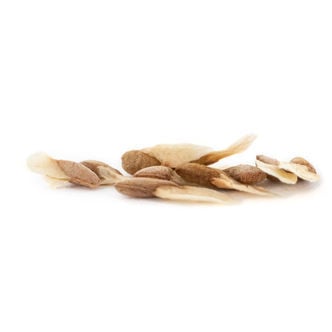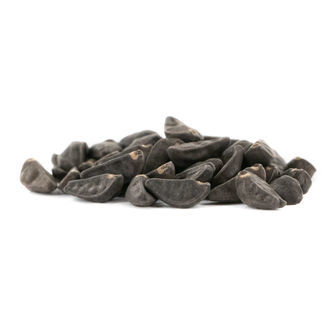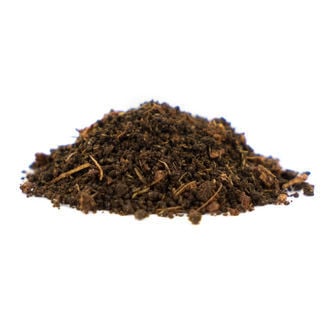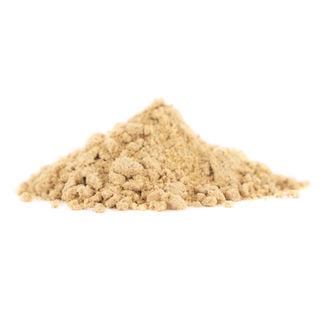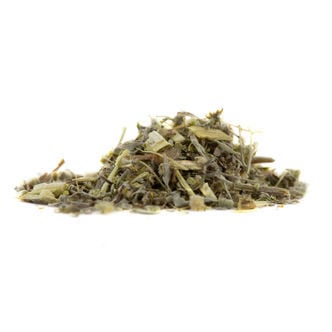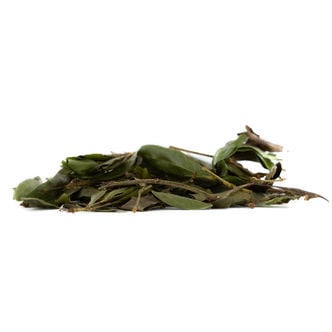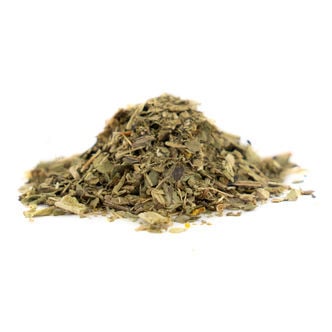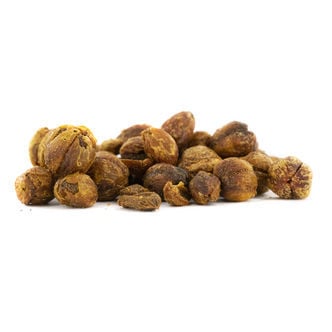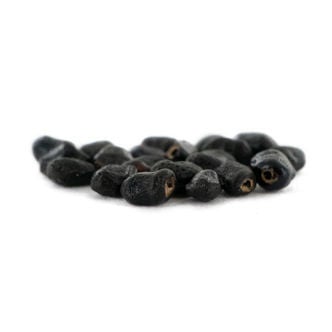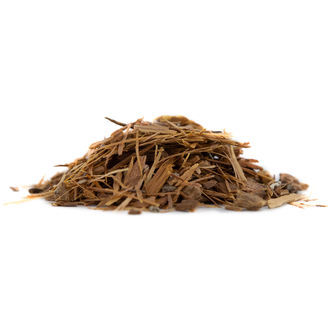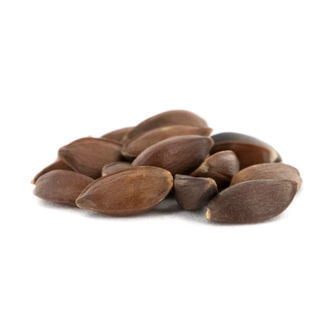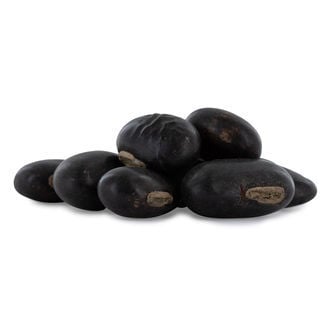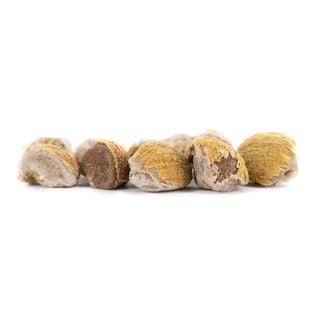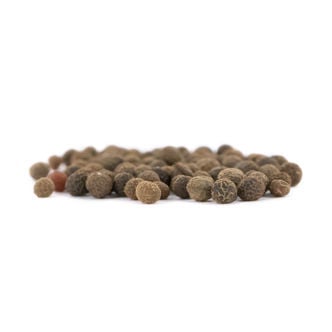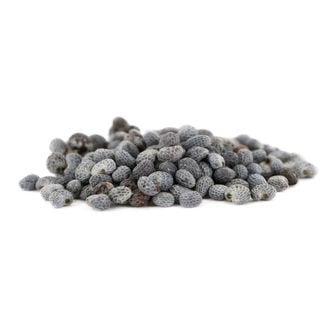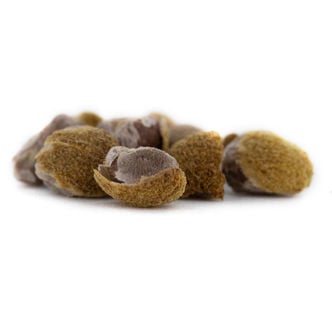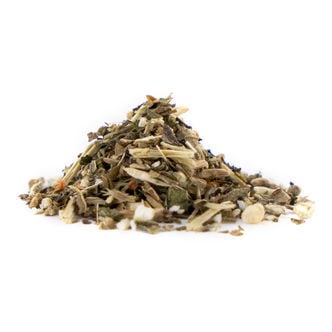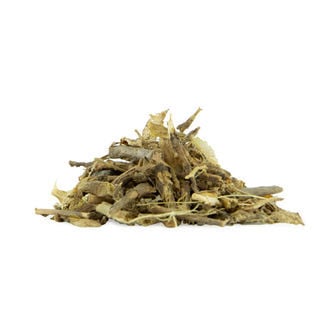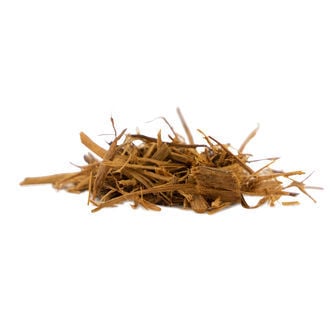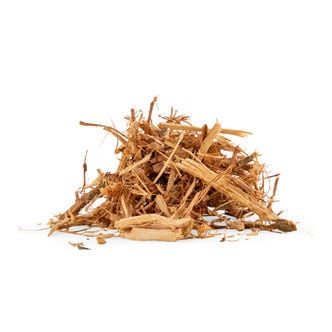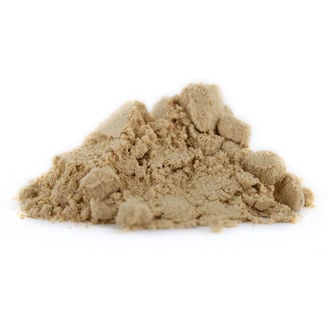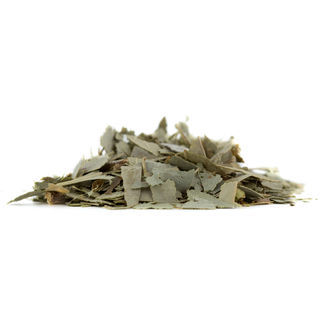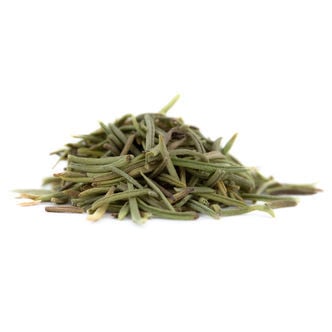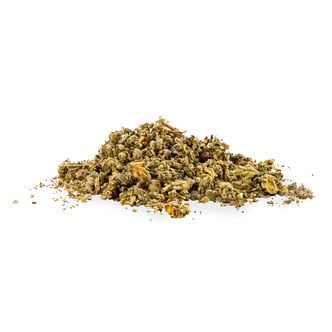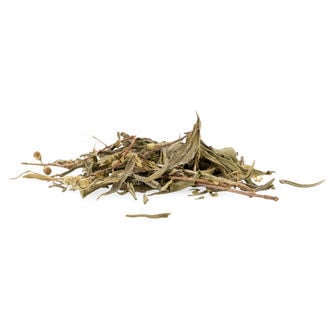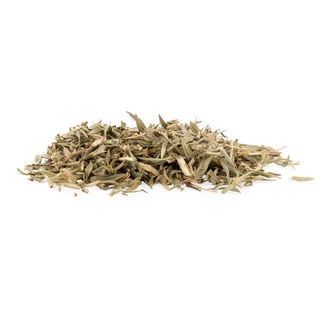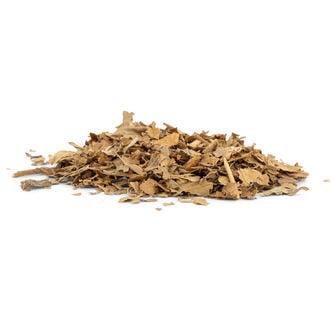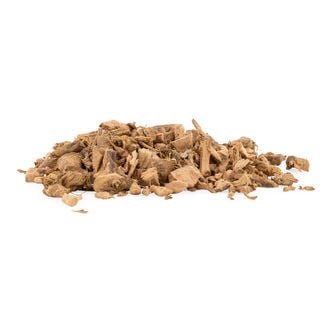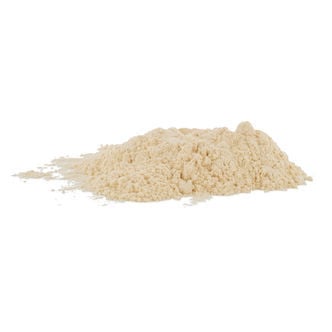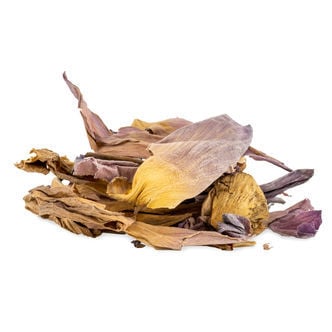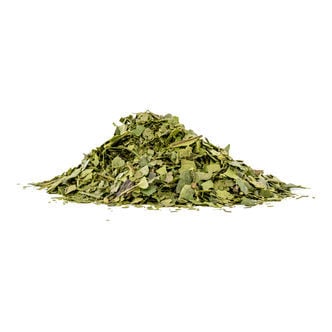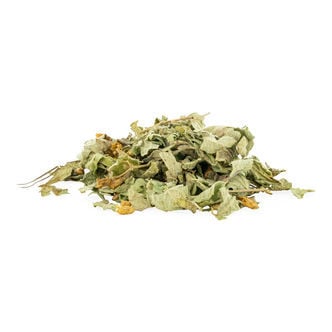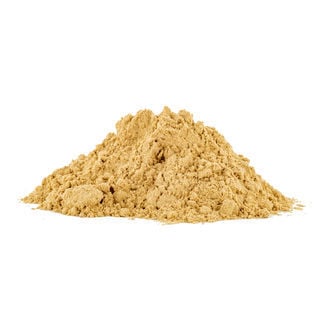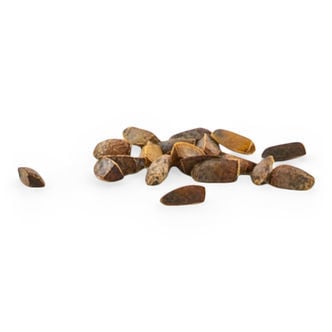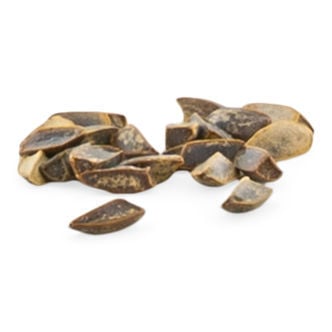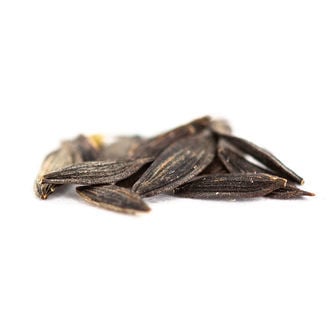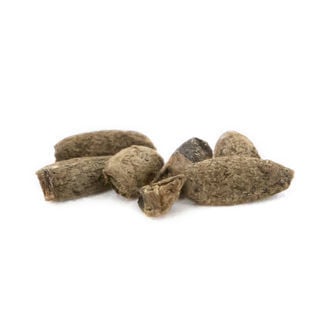Herbs & Seeds
Herbs and seeds have been around as consciousness-altering substances a lot longer than pills and capsules. While natural products are not necessarily free of all negative side effects, at least they’ve been user-tested for thousands of years. Keep your journey safe and legal with our exotic collection.
Calamus - Acorus calamus
Known by its common name of sweet flag, calamus has been an esteemed herb in Europe since the Middle Ages.
Tea & Herb Infuser (Zamnesia)
Making infusions is the oldest way of extracting herbal essences. This bright blue, leaf-themed food-grade silicone and stainless steel infuser from Zamnesia has you covered. The silicone is heat-resistant so you will never burn your fingers, while the branded Zamnesia drip tray keeps things dry and tidy without having to go to the sink.
Guarana - Paullinia cupana
Guarana belongs in the stimulant category of drugs, along with the likes of coffee, tea, ephedra, khat and maté. It comes from the seeds of an Amazonian vine (Paullinia cupana) that look remarkably like horse chestnuts, and its usage dates back thousands of years. Many Indians consider it a gift of the Gods and use it as a hunting aid.
Damiana | Turnera afrodisiaca
Damiana (Turnera afrodisiaca) has a relaxing effect with a euphoric high for 1-2 hours after taking, and like its Latin name suggests, is a mild but effective aphrodisiac.
Blue Lotus - Nymphaea caerulea
Blue Lotus (Nymphaea caerulea) is first mentioned in the Egyptian Book of the Dead; blue and white lotuses were the most important ritual plants in ancient Egypt. The flowers were worn in the hair of the living and the dead, and were an important ornamental element in Egyptian art.
Catnip - Nepeta cataria
Catmint (Nepeta cataria), also known as catnip, is an intoxicant for cats (in fact most felines, even lions) and a mild relaxant in humans. It is a flowering, perennial plant native to Asia and Europe that grows easily even in poor soils.
Valerian (80 grams)
Valerian (Valeriana officinalis) is an old Germanic ritual herb, sacred to the goddess Hertha. The herb used to be hung outside houses as a protection against witches and evil. It has also been used as an aphrodisiac, and its effects are well known. Mixed 50-50 with kava-kava it is said to produce ‘beautiful dreams’.
Leonotis Leonurus Flowers (5 grams)
The leaves and buds of this South African bush are smoked by the Khoikhoi and Bushmen as an inebriant, and in Africa it is known as ‘wild dagga’. In Mexico and California it is used as a cannabis substitute.
Peganum Harmala (10 grams)
Peganum harmala or Syrian rue is a perennial bush native to the eastern Mediterranean now found across northern India and as far as Manchuria. It produces white flowers that develop round capsules containing around 50 brown seeds.
Voacanga Africana (5 grams)
Voacanga africana is a small tree from Africa that can become 6 meters tall. The active compounds in Voacanga africana are voacangine and voccamine. These compounds are chemically related to ibogaine. Native people from Africa use the seeds for their stimulating and psychedelic effects. Some claim it has also aphrodisiac effects.
Ginkgo biloba
The Ginkgo tree is one of the oldest types of trees in the world with no close living relatives. The compounds have antioxidant and free radical properties.
Klip Dagga - Leonotis nepetifolia
Klip Dagga (Leonotis nepetifolia) grows in the tropical and subtropical regions of Africa, India, and Latin America. The dried leaves and flowers of Klip Dagga induce a relaxing and mildly euphoric effect.
Passionflower (80 grams)
Passionflower is a soothing plant that can be enjoyed in numerous ways. It can be made into a tea, tincture, or capsules—the possibilities are nearly endless. Traditionally used for holistic purposes in the Americas and Europe, passionflower has found its place in the modern day.
Skullcap (50 grams)
Make a nice tea from Skullcap (1 teaspoon is enough) and become a bit more relaxed thanks to the mild high it induces. Skullcap gets its name from its flowers, which have the shape from a human skull. The Latin name for Skullcap is Scutellaria galericulata.
White Lotus (20 grams)
White Lotus is extremely similar to Blue Lily and can produce a sense of floating and euphoria when ingested. The dried buds and petals can be prepared as a tea or concoction. Content: 20 grams
African Dream Root (5 grams)
Native to South Africa, Silene capensis has served as a catalyst for deep and meaningful dreams since antiquity. The fascinating plant also helps to promote sleep readiness and boost sleep function—setting the stage for vivid dreams to occur. Simply process the dream herb, place it into capsules, and get ready to explore the dreamscape.
Trippy Garden Pack - Smart Seeds
This Trippy Garden Pack contains a range of different seeds that will flourish into plants containing legal psychoactive compounds. If a herb garden doesn't quite cut it for you, then these seeds will give you a real project. Experiment with a range of psychoactive plants and see which you like the best.
African Dream Seeds (1 seed)
African Dream Seeds are known for their longstanding cultural significance, lucky nature, and the ability to bestow vivid and memorable dreams. Easy to prepare and consume, Entada Rheedii seeds ensure a lively slumber.
Uvuma-omhlope (3 Grams)
Uvuma-omhlope is used by tribes across Africa for its ability to bring you closer to the spirits in your dreams. It is well known to induce lucid dreams with prophetic and enlightening visions. Using Uvuma-omhlope as part of your regular night time schedule will ensure dreams to remember!
Kanna Seeds (10 seeds)
Sceletium tortuosum, commonly known as Kanna, is a succulent plant native to South Africa. Local people chew it for mood elevation. The plant is carefree and makes a great houseplant, but is hard to find in garden centers, so you need a seed supplier.
Wild Lettuce - Lactuca virosa
Wild lettuce (Lactuca virosa), also known as opium lettuce and great lettuce, is a herb native to South and Central Europe - but has since spread to many regions of the world. This dried wild lettuce is ideal for brewing into a tea.
Mulungu (80 grams)
Traditionally used in South America, mulungu offers up soothing and relaxing properties. Easy to use, there's little wonder this supplement has found an audience in the modern world. Commonly used in the evening to promote a healthy night's sleep, and with a wide range of intake methods, mulungu has plenty to offer those seeking relaxation.
Yerba Maté
Yerba maté is a traditional South American brew that acts to stimulate the mind and body. Often compared to tea or coffee, it is a beverage that can give you an upbeat start to the day, or give you energy when you are flagging. However, unlike tea or coffee, yerba maté also comes packed full of vitamins and mood boosting properties.
Gunpowder Tea (100 grams)
Steeped in a rich history dating back to 618–907 AD, gunpowder tea has long been a staple in China. The leaves from the Camellia sinensis plant are withered and then balled into small pellets. This makes them perfect for combining with hot water to create a drink that offers up a uniquely smoky and nutty flavour, as well as an array of potential holistic uses.
Hops Flowers (20 grams)
It is known, that hops are used to stabilize beer, but there is more to these flowers of the hop plant Humulus lupulus. As an old household remedy, they were used to treat restlessness. Enjoy the rich flavour and effects that these dried flowers provide.
St John's Wort
St. John's wort, also known as "perforate" or "common" St. John's wort, is a plant with yellow flowers, that some people, at first glance, may mistake for a common, roadside weed. It has been used for centuries as an herbal mood enhancer. Enjoy the rich flavour and effects of one of Mother Nature's miracle plants.
Lavender (20 grams)
Lavender has a long history of use - it is even mentioned in the Song of Solomon. Lavender is used as a condiment in various foods, beverages, and teas and as a fragrance in cosmetics. Enjoy the highly aromatic experience this fragrant herb provides!
Lemon Balm (20 grams)
Lemon balm (Melissa officinalis) has been used for millennia and today herb lovers are starting to discover the aromatic delights of vaporizing it. In traditional folk medicine it was often used to alleviate coughs and sneezes, and circulatory insufficiency.
Thyme (20 grams)
Thyme has been used for holistic purposes since the days of ancient Rome, but it's also extremely flavourful too! This 20g pack of shredded thyme is perfect for adding to meals, smoothies, and homemade cosmetics. So if you've been looking for a great way to incorporate some thyme into your day, look no further!
Peyote (Lophophora williamsii) 20 seeds
With our freshly harvested high quality Lophophora williamsii (Peyote) seeds you can now grow your own Peyote cacti at home. As compared to fully grown Peyote cacti plants, cultivating your own Peyote can be more economic because you can grow them at relatively low cost. Plus, being able to watch your Peyote seeds grow to full-grown flowering plants can make for a fascinating hobby all on...
San Pedro (Echinopsis pachanoi) 20 seeds
Echinopsis pachanoi, the original San Pedro cactus is one of the sacred cacti of South America. For centuries, this cactus has played an important role in Shamanic culture. The cactus is a native to Bolivia and contains psychoactive compounds, the most important one Mescaline. With our fresh Echinopsis pachanoi (San Pedro) seeds you can now easily grow your own San Pedro cacti at home!
Bolivian Torch (Echinopsis lageniformis) 20 seeds
The Bolivian Torch (Echinopsis lageniformis) is one of the psychedelic cacti of South America that plays an important role in Shamanic rituals. It is similar in appearance to the San Pedro cactus but with fewer and wider ribs. Like the San Pedro cactus, the Bolivian Torch contains a number of psychoactive alkaloids including the powerful psychedelic compound Mescaline.
Tobacco (Nicotiana tabacum) 20 seeds
Christopher Columbus, when he set out to find the New World was the first Westerner that came in contact with a plant that the natives called Tobacco. The peoples of the newly discovered land dried the leaves, lit them and engaged in a strange ritual of “smoking” for recreational purposes. Tobacco (Nicotiana tabacum) is now cultivated everywhere and you too can grow Tobacco with our fresh...
Aztec Tobacco AKA Mapacho (Nicotiana rustica) 20 seeds
Aztec Tobacco (nicotina rustica), also known as Mapacho, is a wild tobacco plant from the southern part of Mexico and the Yucatan peninsula. What makes this tobacco variety different from others is its strength. This tobacco can have up to twenty times more nicotine than regular tobacco. With our fresh Mapacho seeds you can now grow your own Mapacho tobacco plants at home!
Khat (Catha edulis) 10 seeds
Khat (Qat aka “Flower of Paradise”) is an evergreen shrub that is native to Arabia and East Africa. In these regions of the world, Khat is cultivated and widely consumed as a chew because of the plant’s effect that can cause slight excitement and euphoria. With our fresh Khat seeds you can grow your own genuine Khat plants easily at home!
Morning Glory (Ipomoea tricolor) 10 grams
The Morning Glory vine was favoured by the ancient Maya civilisation thanks to its "heavenly blue" appearance and abundance of the psychedelic tryptamine lysergic acid amide (LSA). Once used ceremonially, its seeds are now available to buy from Zamnesia.
Kanna Extract UB40
The relaxing properties of Kanna, a narcotic plant that is native to South Africa are known for more than 300 years. Tribesmen used the plant as a mild recreational drug for pleasure and for relaxation. The Kanna UB40 extract is especially made for vaporizing. While the effect...
Kanna Extract ET2
Kanna is a narcotic plant that is native to South Africa. It is believed that tribesmen know about the relaxing and euphoric properties of Kanna for more than 300 years. The ET2 Kanna extract is the most potent form of Kanna extract available. Used as a snuff, the ET2 Kanna extract...
Wormwood (Artemisia absinthium) 50 grams
Wormwood most famously is the source of absinthes psychedelic power. It was used as a muse by artists and writers in the mid and late nineteenth century. Zamnesia has grown wormwood ready to go.
Bobinsana (Calliandra angustifolia) 20 grams
Bobinsana (Calliandra angustifolia) is a small shrubby tree that grows in the Amazon Basin of South America. Indigenous peoples of the Amazon regions use the plant which can be found alongside rivers and streams as a stimulant where they prepare a decoction of the roots to take for strength and energy.
Prickly Poppy (Argemone mexicana)
The Mexican prickly poppy (flowering thistle, cardo or cardosanto as the Spanish call it) is a plant that is native to the American tropics but is now found throughout the world. It also grows in tropical Africa as well as in India and Nepal. The extremely hardy plant develops bright yellow flowers and produces yellow latex.
Black Oil Plant Seeds (Celastrus paniculatus) 5 grams
Celastrus paniculatus, also known as Black oil plant, climbing staff tree and intellect tree is a woody, fruit-bearing vine from India.
Echinopsis macrogona (Trichocereus macrogonus) 20 seeds
Echinopsis macrogona (AKA Trichocereus macrogonus) is a sacred cactus. Like the Peruvian torch cactus, Echinopsis macrogona contains mescaline which gives it powerful psychedelic and hallucinogenic properties. With the Echinopsis macrogona seeds available at Zamnesia you can now grow this sacred cactus at home!
Catuaba (Erythroxylum catuaba) 80 grams
Catuaba (Erythroxylum catuaba) is a small tree that grows in the rainforest in northern Brazil.
Green Mormon Tea | Ephedra viridis Seeds
Green Mormon tea (Ephedra viridis), also known as green ephedra or Indian tea, is a shrub that grows in dry areas of the Western United States. 20 seeds
Velvet bean | Mucuna pruriens
The Velvet bean (Mucuna pruriens) is a tropical plant that has long been used in many cultures around the world.
Hawaiian Baby Woodrose
Hawaiian baby woodrose (Argyreia nervosa) is a perennial climbing vine with large heart-shaped leaves and white trumpet-shaped flowers. Originally native to India, it now grows around the world, including Hawaii. Its large furry seeds grow in seedpods and contain the psychedelic LSA.
California Poppy (Eschscholzia californica) 100 seeds
California poppy makes a stunning addition to many ornamental gardens, earning attention due to its bright and vibrant orange shades.
Poppy (Papaver somniferum) Seeds
Poppy (Papaver somniferum) is the plant from which opium, morphine, and heroin are made. The poppy seeds themselves don’t contain any alkaloids. With Zamnesia Poppy Seeds, you can grow your own poppy plants at home with ease!
Hawaiian Baby Woodrose Madagascar (Argyreia nervosa) (10 seeds)
Due to popular demand, we've added this Madagascar variety of Hawaiian Baby Woodrose Seeds, which is reportedly stronger than other varieties.
Wild Dagga | Leonotis leonurus
Wild Dagga is another member of the vast catalogue of psychoactive herbs found on earth. The African plant is reported to have a similar high to that of cannabis, yet much less potent. The dried herb can be smoked or used to make decoctions.
Kanna 5 grams
Kanna (Sceletium tortuosum), also known as Channa or Kougoed, is a plant commonly found in South Africa. Indigenous tribes have been using Kanna for its mood-enhancing and relaxing properties for thousands of years. Now, it has gained popularity in the West.
Banisteriopsis caapi (50 grams)
Banisteriopsis caapi is a sacred vine from the Amazonian jungle. Zamnesia has shredded Banisteriopsis caapi in stock in packs of 50 grams.
Clavo Huasca (Tynanthus panurensis)
Originally found in South America and Amazon rainforests, Clavo Huasca (Tynanthus panurensis) is a long-growing woody vine that's harvested for a variety of potential effects. With uses being traced back to traditional Peruvian medicine, there's certainly a lot to uncover with this extract. Now you can get your hands on Clavo Huasca that's versatile and has plenty of applications.
Maca
Originally grown in the Andes Mountains, maca is a resilient and versatile plant who’s roots were used throughout the Inca empire. It an exclusive food of the upper classes and rewarded to accomplished warriors. For good reason as well, maca is highly nutritious and increases energy – try this super food for yourself. 80 Grams
Eucalyptus globulus (20 grams)
Eucalyptus leaves possess a potent mix of aromatic terpenes that light up the olfactory system and put the mind at ease. The leaves of this towering tree make a great addition to a relaxing blend.
Rosemary (Rosmarinus officinalis) 20 grams
Rosemary is aromatic, flavourful, and extremely versatile. Whether you're looking to brew a tea, add a little to a blended smoothie, bake it into bread, or even place some in an aroma lamp, there's plenty to get out of this perennial plant. This 20-gram pack is ideal for adding a little rosemary into your daily life.
Marshmallow | Althaea officinalis (50 grams)
Marshmallow, mallow, or Althaea officinalis is an ancient herb with a long trajectory of folk and culinary use across many cultures, including the Ancient Egyptians, the Middle East, Europe, and Asia.
Sinicuichi (Heimia salicifolia) 20 grams
Favoured by the Aztecs, Sinicuichi (Heimia salicifolia) is a sacred herb teeming with alkaloids. Native to the Americas, you can now experience it direct from Zamnesia. It’s never been easier to tap into the wisdom of ancient cultures.
Maconha Brava (Zornia latifolia) 20 grams
Growing all over Western Africa, maconha brava (Zornia latifolia) is an unassuming plant with a fascinating chemical structure. And despite only showing its flowers for several hours, locals have learnt to harvest both the flowers and leaves to create a refreshing tea with mystical properties.
Bay Bean (Canavalia maritima) 20 grams
Also known as beach bean or Mackenzie bean, bay bean (Canavalia rosea sin. C. maritima) is a flowering plant that grows in many of the world's tropical areas, mainly on beaches, cliffs, and dunes. It has a high tolerance for saline conditions and grows well in sandy soils. The root, leaves, seeds, and flowers of Canavalia maritima have long been used in food and for holistic purposes.
Galangal (Alpinia officinarum) 50 grams
Galangal is a member of the ginger family (Zingiberaceae) and is commonly used in many cultures across Southeast Asia as an additive in foods and beverages, as well as traditional herbal preparations. Galangal is also closely related to turmeric, and boasts a very strong ginger-like flavour (much stronger than regular ginger).
Ginseng (Panax ginseng) 25 grams
Panax ginseng, Asian ginseng, or simply ginseng, is the root of a perennial plant native to the mountains of East Asia. Rich in a variety of unique phytochemicals, ginseng has a long and rich history as a traditional herbal preparation. Powdered ginseng is made from dried and pulverised ginseng roots, and can be mixed into smoothies, juices, teas, and other beverages.
Pink Lotus (20 grams)
Used for many centuries, pink lotus still has a place in the modern world. By brewing up a batch of pink lotus tea, it's never been easier to experience all of the aromatic nuances that this flower provides.
Holly Tree (Ilex guayusa) 50 grams
Commonly cultivated in Ecuador and native to the lush rainforest of the Amazon, holly tree (Ilex guayusa) is an evergreen tree whose leaves have been consumed in South America for thousands of years. It's often referred to as the sister to yerba mate, but with a less bitter and generally more pleasant flavour. You can now get holly tree in 50g packets from Zamnesia.
Dream Herb (Calea zacatechichi) 20 grams
Used by indigenous tribes of Mexico, Calea zacatechichi is known by several names, including “dream herb”, “God leaf”, and “bitter grass”. For centuries, shamans have been ingesting the herb during their religious practices, and for healing purposes. Nowadays, this plant is available to anyone willing to try it, and its dried leaves can easily be steeped into a tea.
Ashwagandha (Withania somnifera) 50 grams
Often referred to as “Indian ginseng” or “winter cherry”, ashwagandha is a plant whose roots or leaves have been used for thousands of years in Ayurveda. Its botanical name is Withania somnifera, and it's native to India, the Middle East, and some parts of Africa. Whether you choose powder or shredded roots, it's easy to add this herb to your diet.
Marihuanilla (Leonurus sibiricus) Seeds
A beautiful plant with a tall central stem and enchanting purple/pink flowers, marihuanilla (Leonurus sibiricus) can easily take centre stage in any garden. Its smell is similar to that of a cannabis plant and it attracts plenty of helpful pollinators. Plants enjoy sunny spots and well-drained soil, and overall, they are not excessively demanding.
Wild Dagga (Leonotis leonurus) Seeds
Originating from South Africa, wild dagga makes for an eye-catching plant, thanks to its bright orange colouring. Not only appealing to the eye, this plant is also easy to cultivate, making it appropriate for growers of all levels. The seeds can be sown anytime, but perform best between February and May. A little upkeep is required, and they'll deliver year-round.
Ashwagandha (Withania somnifera) Seeds
Ashwagandha (Withania somnifera) is a shrub native to India, and it has been used for many years in the Ayurvedic tradition. Attractive and easy to cultivate, why not try growing it in your very own garden?
Wild Lettuce (Lactuca virosa) Seeds
Wild lettuce (Lactuca virosa) thrives in cool and cold conditions and produces edible leaves throughout most of the year, even into winter. Plus, it's full of nutrients. Get growing!
Klip Dagga (Leonotis nepetifolia) Seeds
Native to Africa and Southern India, klip dagga is a colourful plant with a unique appearance. Fortunately, it's also pretty simple to grow. Sow the seeds indoors at the end of April in moist soil, and keep the same conditions until they germinate. Then, move them outside so they can flourish. Provide them with plenty of light and warmth, and harvest leaves and flowers when ready.









 United States
United States
